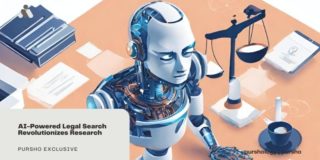A high school student’s assignment sparks controversy and debates over academic honesty in the age of artificial intelligence. Joshua, a stellar student at a small California high school, found himself in hot water when TurnItIn’s AI software flagged his essay for potential AI-assistance.
In the era of technological advancement, AI systems like TurnItIn have started to get utilized by educational institutions to scan students’ work for plagiarism to ensure the authenticity of submissions.
AI detection algorithms are designed to detect patterns and styles in writing, comparing them to vast databases of content and determining the chances something was written with AI.
But this instance with Joshua’s essay brought to light an unprecedented twist.
Joshua, renowned for his articulate and eloquent writing style, had submitted an essay which, in the eyes of TurnItIn’s AI, appeared too sophisticated for a high school student.
Astonishingly, the AI system seemed to have confused the complexity and flair of Joshua’s writing with the characteristics of content generated by advanced AI text systems like ChatGPT. This occurrence exposed a potentially critical flaw in the reliance on AI for evaluating academic work. It was all released so fast, what was even behind the software?
At Joshua’s high school, as in many schools nationwide, TurnItIn’s flagging has started to become very serious.
This semester, a class at Syracuse University also ran into the same issue – but on a much larger scale.
A bewildered professor received TurnItIn results for an entire class of students, indicating extremely high probabilities of AI authorship across the board. This wasn’t just one or two students; it was a staggering number that raised immediate suspicions regarding the credibility of both TurnItIn’s AI detection algorithm and his very own students.
The Syracuse incident added fuel to the fire in the broader discussion on the limitations and potential biases of AI systems in educational settings. The professor, who was well-acquainted with his students’ writing abilities, found it improbable that all of them had suddenly turned to AI for assistance. Curious and concerned, he decided to investigate further.
As the professor dove into the details, it became apparent that the algorithm might be misinterpreting creativity, complex sentence structures, and articulate expression as characteristics of AI-generated content. Or was it? Nobody really knew.
Notably, this was exactly what Joshua had experienced on the other side of the country. Joshua’s flagged essay set off alarm bells and the administration swiftly acted, possibly too swiftly.
Without much deliberation, Joshua was accused of using AI to complete his assignment. The integrity of his work was called into question, and the school administration, believing the AI detection to be foolproof, initially handed down a severe punishment. They mandated a 50% deduction on his essay grade and also assigned him community service as a form of disciplinary action!
Joshua, known for his academic prowess, boasts an impressive record. He has been a recipient of the Highest Honor Roll Award and even bagged one of the ten coveted Exemplary Christian awards given to high school students. His accolades include top student medals for English, Art, Math, a Best of Show award, and a CSF certificate.
But this record was almost tainted when Joshua’s essay was flagged by TurnItIn. His mother, a relentless advocate for her son’s education, was not willing to let this go without a fight.
She said, “At our initial meeting, [the English teacher] said she was ‘shocked and surprised’ that AI flagged Joshua’s paper because he is such a good writer, but now her story has changed.” After further review, the teacher claimed to see a difference in Joshua’s writing. Interestingly, the same teacher mentioned she suffers from long-term COVID brain.
The Dean of the school, who is also the football coach, admitted to having limited knowledge of the AI system. TurnItIn offered the school a free trial of its AI update, and the school does not currently have a policy regarding the software’s use. How is this fair to students getting caught in the crossfire?
This incident raises concerns about the reliance on AI for academic integrity assessments, especially when the educators themselves are not well-informed about the technology they are using.
Other school administration members across the world are actually choosing to opt-out of the detection software, as it’s too early to make academic-life altering decisions based on technology that is so new.
Regarding Joshua’s, his mother felt no choice but to seek legal counsel. The lawyer mentioned handling a similar case with even harsher penalties that was won. However, due to Joshua attending a private school, the situation differed.
As AI continues to evolve, the incident at Joshua’s high school serves as a cautionary tale. It underscores the importance of understanding the technology, particularly in education, where young minds’ futures are at stake.
Joshua’s case highlights that while AI can be a useful tool, human judgment remains essential. His journey will be one for the history books as society grapples with the challenges of merging AI into education.
Is it a case of AI mistaken or sheer brilliance? For Joshua, this experience will be a wake up call to himself & hopefully the rest of the nation as they prepare for the future of education in an increasingly digital world.
In Joshua’s story, we find a stark reminder that although we are in the age of AI, we must not allow technology to overrule our human judgment and discernment.
AI algorithms, as advanced as they may be, are not infallible. They do not understand context, they do not feel empathy, and they do not possess the holistic perspective that humans do. The complexity of human intellect can often be mistaken for something it’s not – as seen in Joshua’s case.
As Joshua’s mother wisely sought legal advice, the lawyer pointed out a critical aspect – private schools are governed by a different set of rules and regulations compared to public institutions. This adds another layer to the debate, making us question how universally applicable AI tools like TurnItIn can be across different educational settings.
Are we prepared for this new era where AI intersects with education? Have we equipped our educators, administrators, and students with the necessary understanding of these technologies? Are our legal systems ready to handle disputes arising from AI involvement in academic matters?
As we applaud Joshua for standing up and challenging the status quo, let us also take a moment to introspect. This experience is not just a wake-up call for Joshua, but for all of us. It raises questions about the role of technology in our lives, the transparency of its application, and the critical importance of human involvement and oversight.
As we propel into the future, Joshua’s story serves as a compelling reminder – it’s time we not only question how we use AI, but also, how AI uses us.
So, as we stand on the cusp of the AI revolution, we must ask ourselves: Are we shaping AI, or is AI shaping us? And in this delicate balance of progress and preservation, who will be the ultimate gatekeeper – man or machine?




